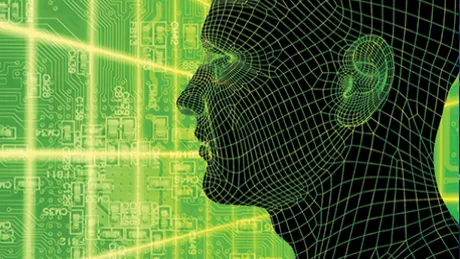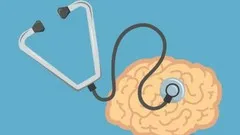
Computational Neuroscience 
This course introduces students to computational methods for understanding the functioning of nervous systems. Topics such as representation of information by spiking neurons, processing of information in neural networks, and algorithms for adaptation and learning are explored using Matlab/Octave/Python demonstrations and exercises. It is designed for third- or fourth-year undergraduates, beginning graduate students, professionals, and distance learners. ▼
ADVERTISEMENT
Course Feature
![]() Cost:
Cost:
Free
![]() Provider:
Provider:
Coursera
![]() Certificate:
Certificate:
Paid Certification
![]() Language:
Language:
English
![]() Start Date:
Start Date:
29th May, 2023
Course Overview
❗The content presented here is sourced directly from Coursera platform. For comprehensive course details, including enrollment information, simply click on the 'Go to class' link on our website.
Updated in [March 06th, 2023]
Computational Neuroscience is a course designed to provide an introduction to basic computational methods for understanding what nervous systems do and how they function. Through the use of Matlab/Octave/Python demonstrations and exercises, students will explore the computational principles governing various aspects of vision, sensory-motor control, learning, and memory. Topics covered in the course include representation of information by spiking neurons, processing of information in neural networks, and algorithms for adaptation and learning. This course is primarily aimed at third- or fourth-year undergraduates and beginning graduate students, as well as professionals and distance learners interested in learning how the brain processes information.
[Applications]
After this course, students should be able to apply the computational methods they have learned to analyze and interpret data from experiments in neuroscience. They should also be able to develop models of neural systems and use them to make predictions about behavior. Additionally, they should be able to use the programming skills they have acquired to develop their own simulations and experiments.
[Career Paths]
1. Neuroscientist: Neuroscientists study the structure and function of the nervous system, including the brain, spinal cord, and peripheral nerves. They use a variety of techniques, such as electrophysiology, imaging, and molecular biology, to investigate the development, organization, and plasticity of the nervous system. Neuroscientists are increasingly using computational methods to analyze and interpret data, and to develop models of neural systems.
2. Cognitive Scientist: Cognitive scientists study the mental processes involved in perception, learning, memory, decision-making, and language. They use a variety of methods, including experiments, computer simulations, and mathematical models, to understand how the mind works. Cognitive scientists are increasingly using computational methods to analyze and interpret data, and to develop models of cognitive processes.
3. Artificial Intelligence Engineer: Artificial intelligence engineers design and develop computer systems that can think and act like humans. They use a variety of techniques, such as machine learning, natural language processing, and robotics, to create intelligent systems that can solve problems and make decisions. Artificial intelligence engineers are increasingly using computational methods to develop more sophisticated and powerful AI systems.
4. Data Scientist: Data scientists use a variety of techniques, such as machine learning, statistics, and data mining, to analyze large datasets and uncover patterns and insights. They use these insights to develop predictive models and algorithms that can be used to make decisions and solve problems. Data scientists are increasingly using computational methods to analyze and interpret data, and to develop more powerful and accurate models.
[Education Paths]
1. Bachelor of Science in Neuroscience: A Bachelor of Science in Neuroscience is a four-year degree program that provides students with a comprehensive understanding of the brain and nervous system. Students will learn about the anatomy and physiology of the brain, as well as the molecular and cellular processes that underlie its functioning. They will also gain an understanding of the principles of neuroscience, including neurochemistry, neurophysiology, and neuroanatomy. Additionally, students will learn about the development of the nervous system, the effects of drugs and toxins on the brain, and the role of the nervous system in behavior. This degree program is ideal for those interested in pursuing a career in neuroscience research or clinical practice.
2. Master of Science in Computational Neuroscience: A Master of Science in Computational Neuroscience is a two-year degree program that provides students with an in-depth understanding of the principles of computational neuroscience. Students will learn about the mathematical and computational models used to study the brain and nervous system, as well as the algorithms and techniques used to analyze and interpret data. They will also gain an understanding of the principles of neural networks, machine learning, and artificial intelligence. This degree program is ideal for those interested in pursuing a career in research or teaching in the field of computational neuroscience.
3. Doctor of Philosophy in Computational Neuroscience: A Doctor of Philosophy in Computational Neuroscience is a four-year degree program that provides students with an advanced understanding of the principles of computational neuroscience. Students will learn about the mathematical and computational models used to study the brain and nervous system, as well as the algorithms and techniques used to analyze and interpret data. They will also gain an understanding of the principles of neural networks, machine learning, and artificial intelligence. This degree program is ideal for those interested in pursuing a career in research or teaching in the field of computational neuroscience.
4. Master of Science in Artificial Intelligence: A Master of Science in Artificial Intelligence is a two-year degree program that provides students with an in-depth understanding of the principles of artificial intelligence. Students will learn about the algorithms and techniques used to create intelligent systems, as well as the principles of machine learning and deep learning. They will also gain an understanding of the principles of natural language processing, computer vision, and robotics. This degree program is ideal for those interested in pursuing a career in research or teaching in the field of artificial intelligence.
Pros & Cons

1. Insightful and in-depth introduction to computational neuroscience.

2. Active and informative forums with helpful neuroscientists.

3. Provides practical understanding of concepts and models.

4. Covers a wide range of subjects and building blocks.

5. Offers a gateway to understanding the relationship between neuroscience and machine learning.

1. Lectures can be fast-paced and skip important concepts.

2. Advanced and may require prior knowledge of programming, probability, and calculus.

3. Lack of practice problems and explanations for quiz solutions.

4. Some instructors' presentation style is not engaging or clear.

5. Can be challenging for learners with no background in computer programming.
Course Provider

Provider Coursera's Stats at AZClass
Computational Neuroscience introduces students to computational methods for understanding the function of the nervous system. Demonstrations and exercises using Matlab and Octave/Python explore topics such as representing information through spiking neurons, information processing in neural networks, and adaptive and learning algorithms. It is designed for third- or fourth-year undergraduates, beginning graduate students as well as professionals, and distance learners. Through this course, learners develop a better understanding of the computational principles that govern various aspects of vision, sensorimotor control, learning, and memory. They will learn how to represent information through spiking neurons, process information in neural networks and use algorithms to adapt and learn.
Discussion and Reviews
0.0 (Based on 0 reviews)
Explore Similar Online Courses

Django Authentication Course

Supply chain management of NTD health products for NTD programmes

Python for Informatics: Exploring Information

Social Network Analysis

Introduction to Systematic Review and Meta-Analysis

The Analytics Edge

DCO042 - Python For Informatics

Causal Diagrams: Draw Your Assumptions Before Your Conclusions

Whole genome sequencing of bacterial genomes - tools and applications

Control Your Subconscious Mind: Neuroscience Hidden Secrets

Perform an Excellent Neurological Bedside Exam


Start your review of Computational Neuroscience